RadWagon Rear Wheel Removal Guide
This guide will show you how to remove and reinstall the rear wheel on a RadWagon. The photos below show a 2018 RadWagon, but the process will be similar for most RadWagon models.
Tools Needed:
- Wooden blocks to prop up the bike
- Handlebar grip props to protect the display
- 15 mm wrench
- Flat side cutters
- Torque wrench
- A friend to help
- A few zip ties
- Nitrile gloves (optional)
Follow the instructions below to remove and reinstall the rear wheel.
Remove the Wheel
- Get the bike ready for maintenance. Turn off the bike, remove the battery, and press and hold MODE to discharge remaining power.
- Flip over the bike. Have a friend help flip over the bike. Set the handlebar grips on the props to protect the LCD display from damage while performing maintenance.
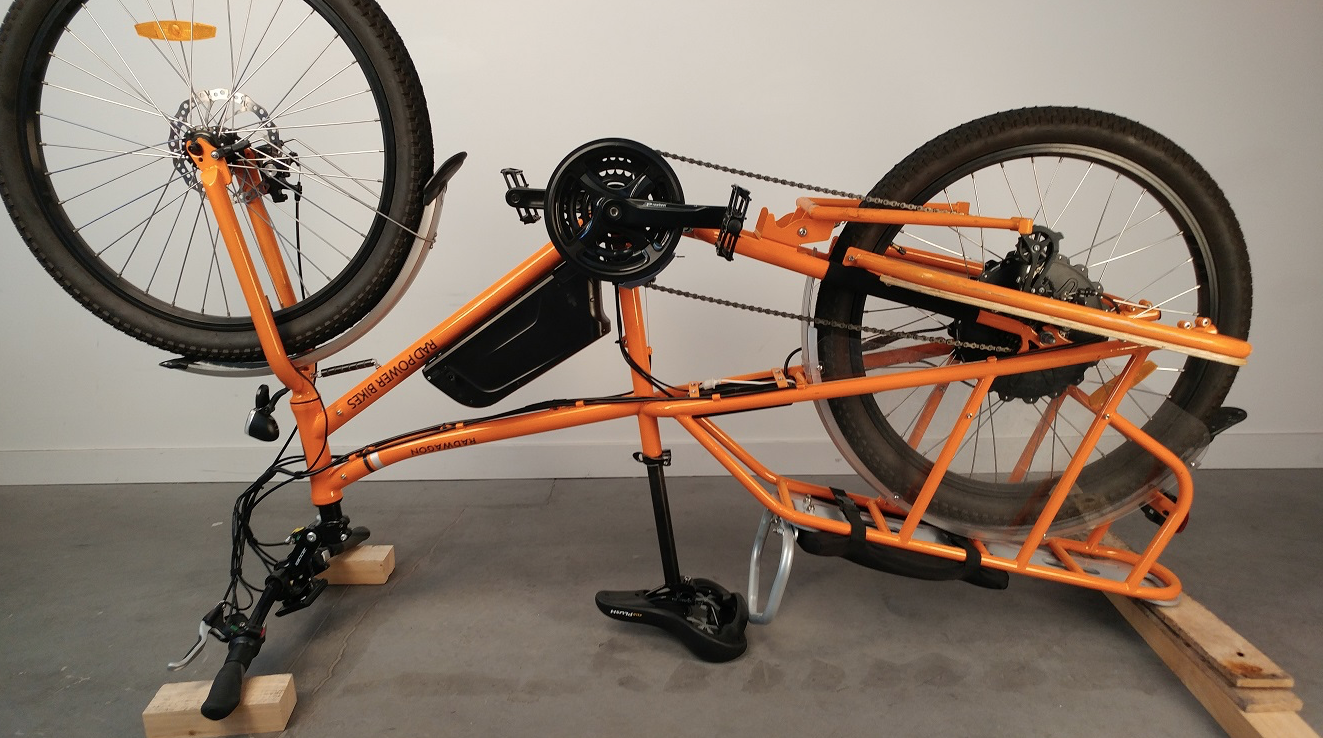
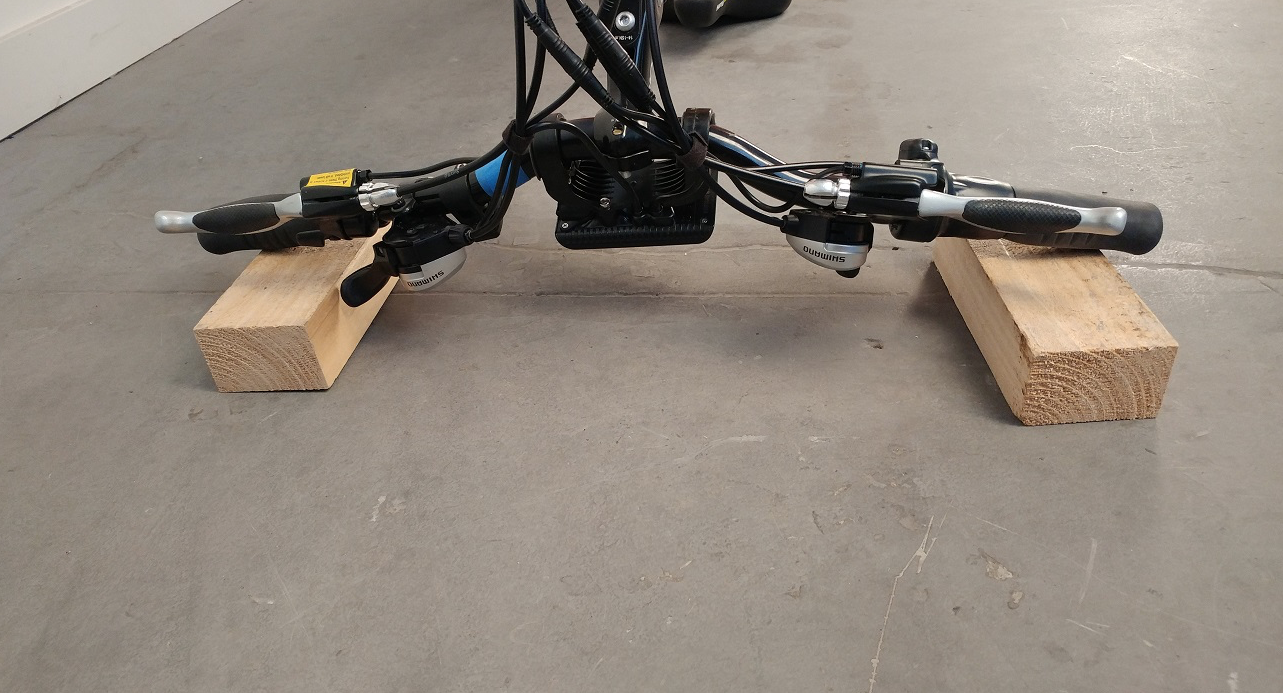
- Locate and unplug the motor cable. The motor cable is located by the chainstay. Snip zip ties as needed and pull the connector directly apart, without twisting, to unplug.
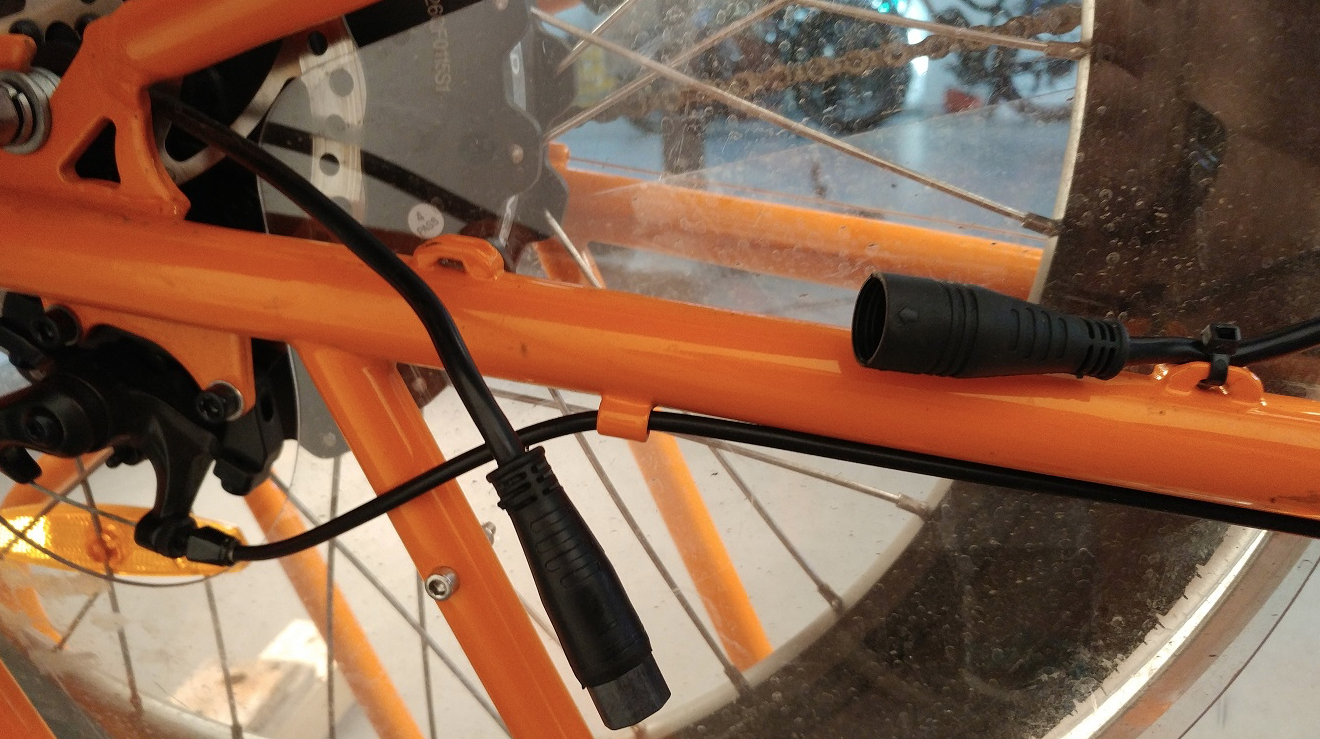
- Loosen the axle nuts. Use a 15 mm wrench to loosen (but not remove) the axle nuts just enough so the wheel can be removed. Do not remove the axle nut or washers completely because the orientation of the torque arm and torque washer is very important for safety.
Note: We recommend taking a photo of the order of the washers and additional hardware on the motor axle to help with reinstallation.
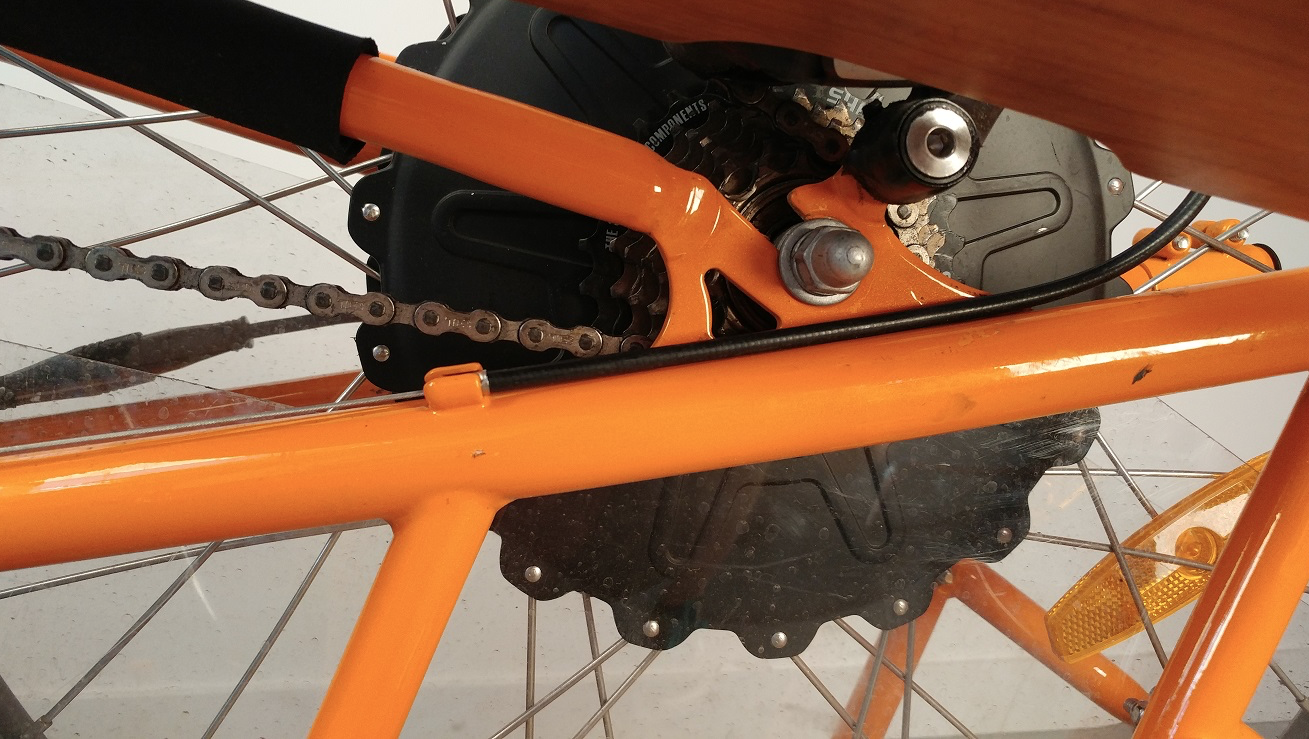
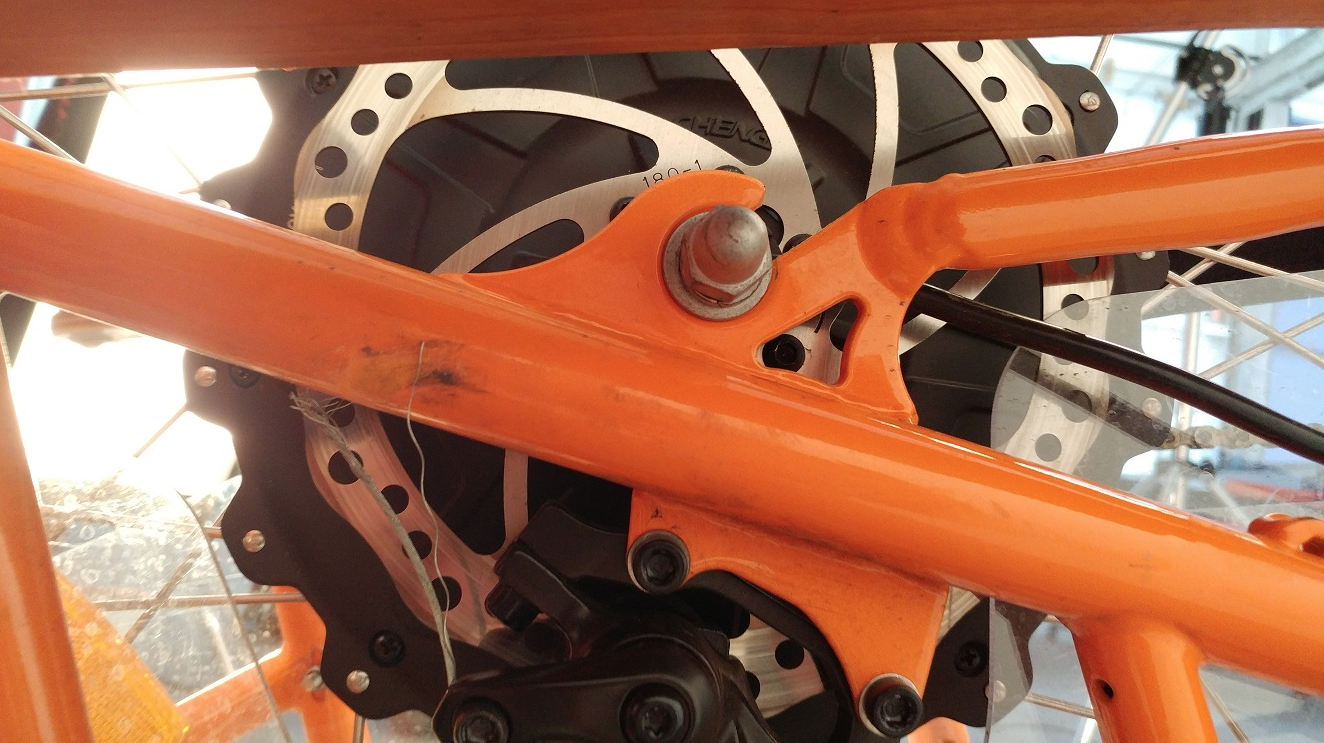
- Prop up the kickstand, pull the derailleur body toward the back of the bike, and remove the wheel. If the rear wheel is difficult to remove, rock the wheel back and forth while lifting, without touching the brake rotor. Lift the chain off of the cog.
- Perform necessary maintenance. Once the rear wheel is removed, change the tube or tire, swap in a new wheel, etc.
Reinstall the Wheel
- Ensure all hardware is ready to be installed in the correct order. Refer to the images below, which apply to most models, or the photo taken in a previous step.
Brake rotor side of the wheel:
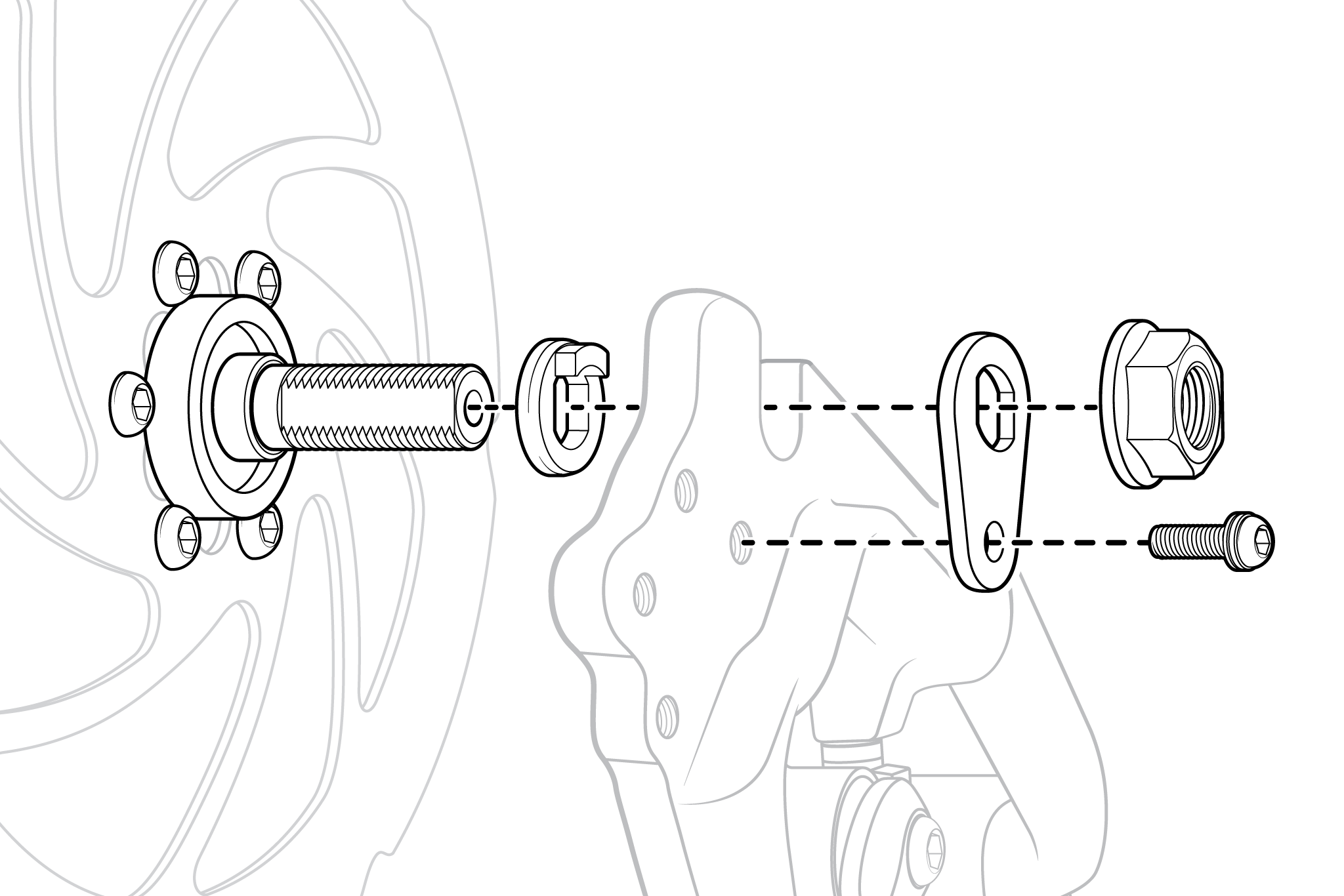
Derailleur side of the wheel:
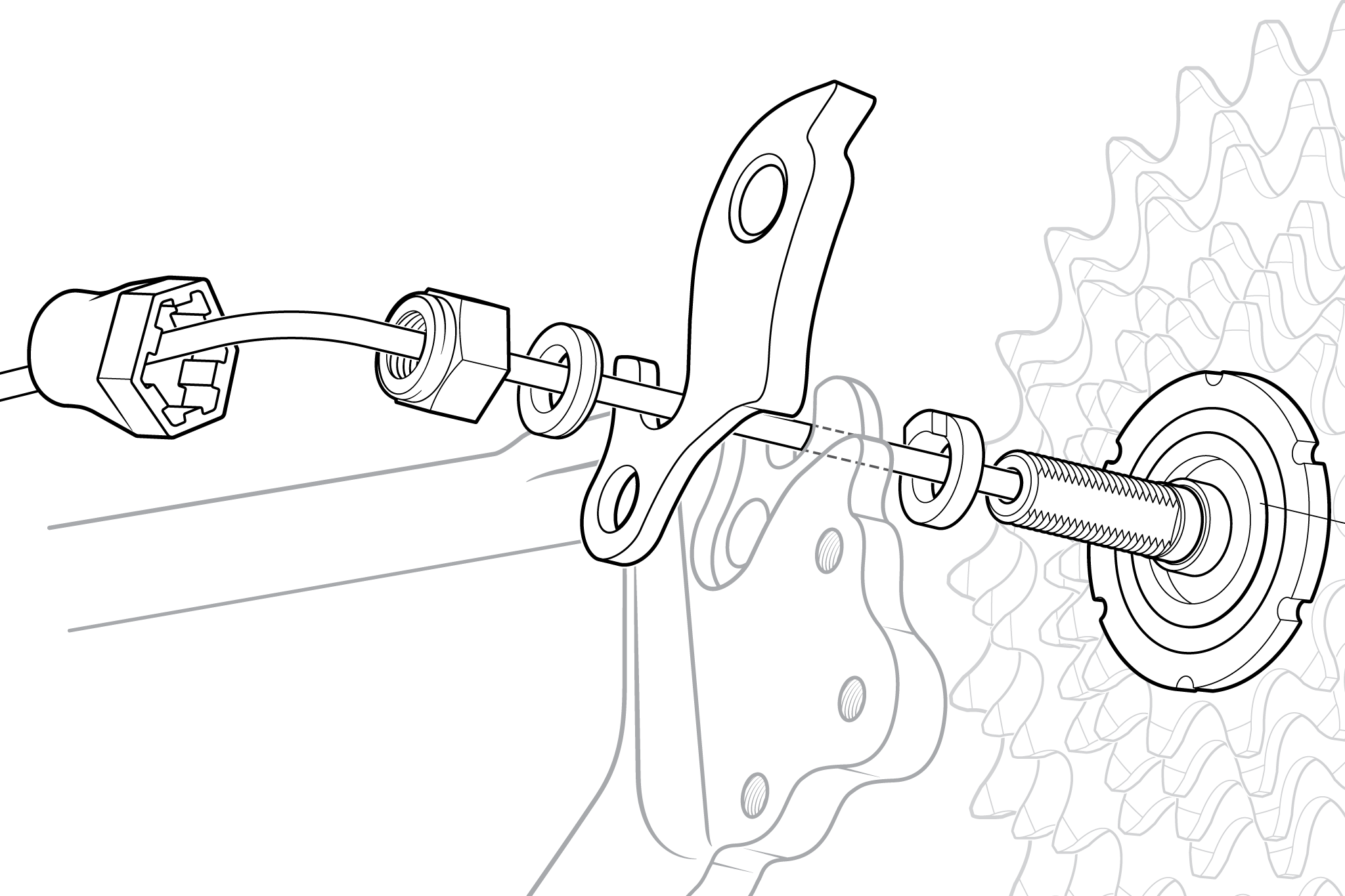
- Reinstall the wheel. Pull back on the derailleur body and route the chain onto the smallest cog, then place the wheel in the dropouts.
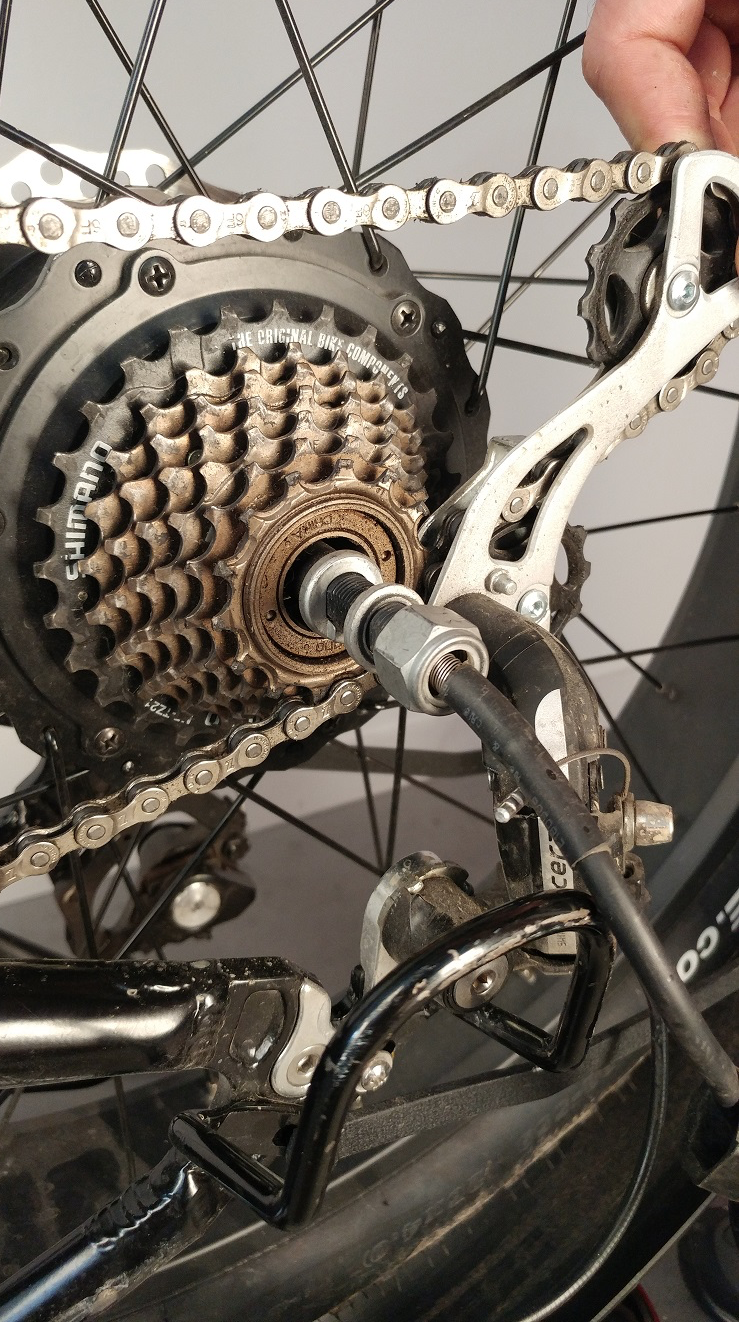
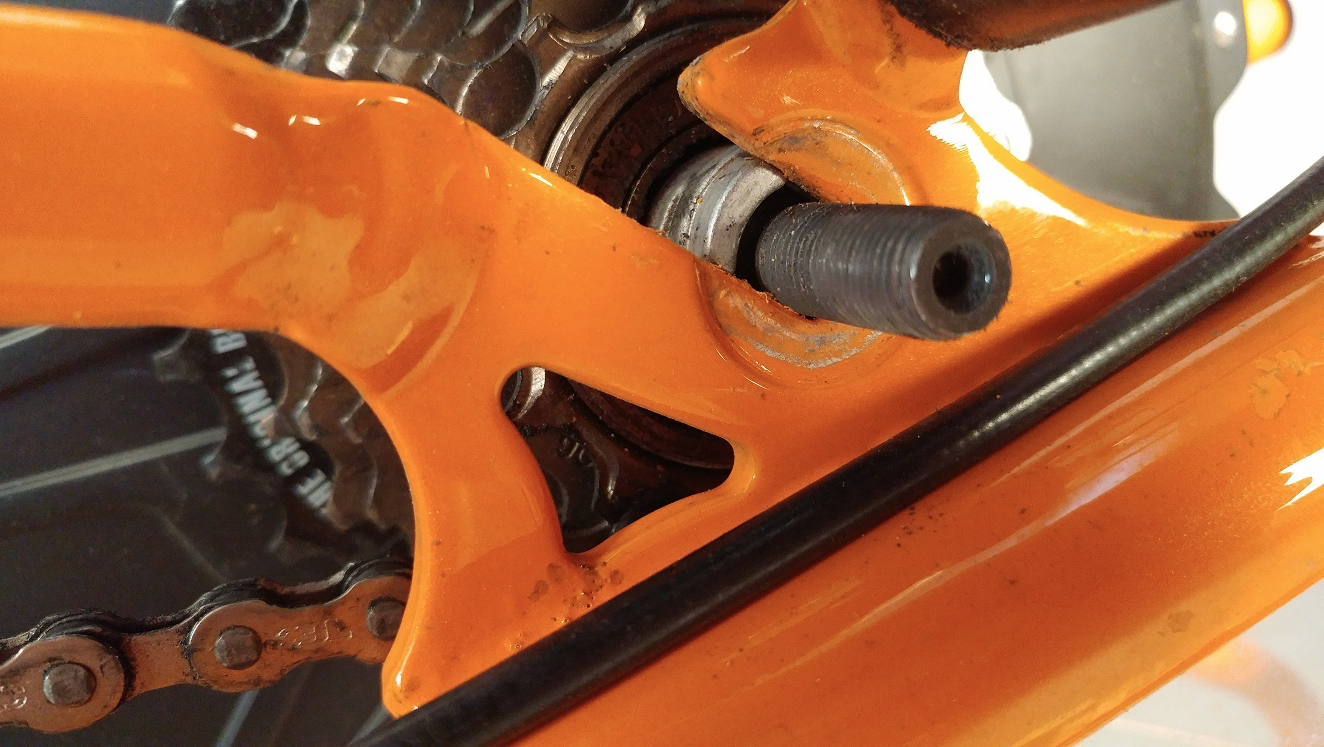
- Check that the torque washer is in the correct position and the brake rotor is in position. Use the photo below for reference, if needed. The brake rotor should slide between the brake pads in the brake caliper, the axle should be fully seated in the dropouts, and the torque washer should be seated against the freewheel nut with its tab extending into the dropout. If there is a gap between the axle and the dropout, use a 10 mm wrench to carefully turn the axle to line up the flat sides with the sides of the dropouts, and adjust the wheel so it is fully seated in the dropouts.
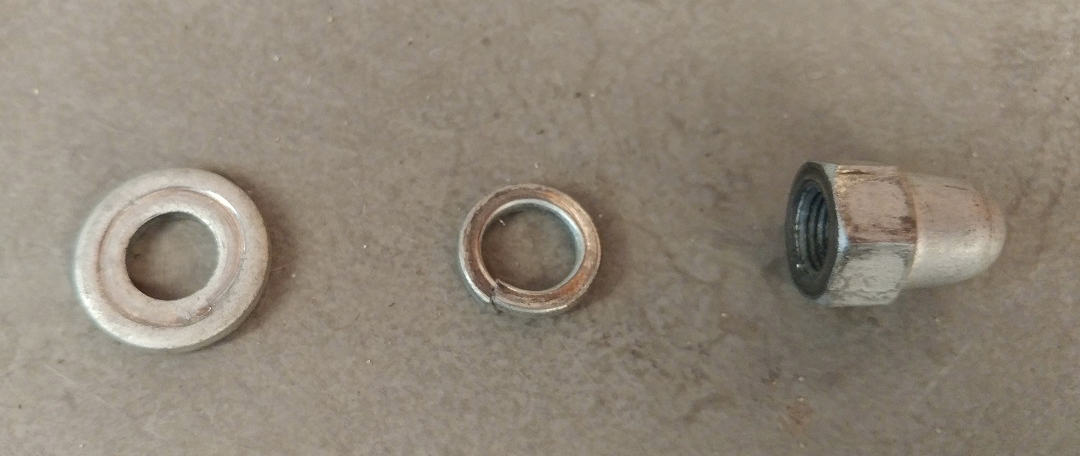
- Tighten the axle nuts. Ensure the axle is seated properly in the dropouts and that the wheel is straight. Tighten the axle nut on the brake rotor side first, then check that the derailleur side is still in place in the dropout. Use a 15 mm wrench to torque both axle nuts to 40 Nm.
- Plug in the motor connector. Line up the internal notches and pins (and external arrows), and press each side directly together, without twisting, to reconnect. Replace the zip tie and trim it to be flush and smooth.
- Reinstall the battery and test the bike fully before riding.
If you are not confident in your ability to successfully and safely perform all steps, we recommend having the work performed by a local, certified, and reputable bike mechanic.
